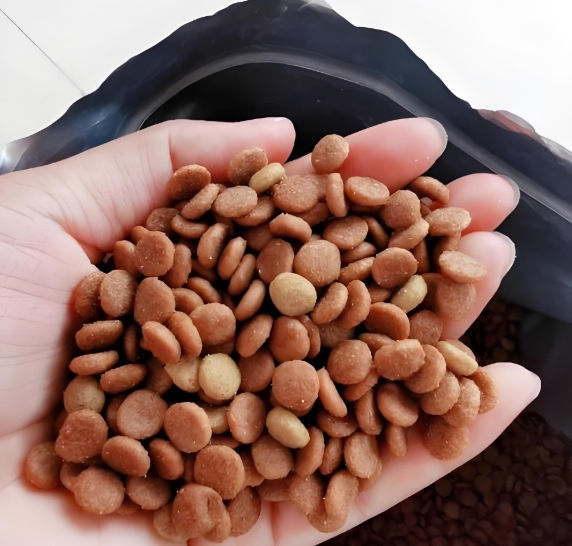The story of dog food is a fascinating reflection of human societal changes, advancements in nutritional science, and industrial innovation. What began as simple scraps has evolved into a sophisticated, multi-billion dollar industry focused on providing complete and balanced nutrition for our canine companions.
A Brief History of Dog Food
The development of commercial dog food can be broken down into several key phases:
- The Pre-Industrial Era: Table Scraps and Raw Diets
For centuries, dogs lived on diets composed of table scraps, leftovers from human meals, and raw meat and bones. Their diet was directly tied to what their human owners could provide, often lacking consistency and essential nutrients. - The Birth of Commercial Food (Mid-1800s – 1940s)
The first commercial dog food was introduced by an American electrician named James Spratt. In the 1860s, he conceived the idea of a convenient, baked biscuit for dogs after seeing sailors feed hardtack (a type of biscuit) to dogs at a port. His “Spratt’s Patent Meat Fibrine Dog Cakes” made from wheat, vegetables, beetroot, and beef blood marked the birth of the pet food industry. In the 1920s, canned horse meat became the first wet food available. However, these early products were more about convenience than complete nutrition. - The Rise of Kibble and Scientific Nutrition (1950s – 1990s)
The post-WWII era saw a surge in convenience products. The single most important innovation was the development of dry kibble through the extrusion process. This allowed for the creation of a shelf-stable, nutritious, and affordable food that could be mass-produced. Furthermore, research into canine nutritional requirements led to the establishment of standards by organizations like the AAFCO (Association of American Feed Control Officials), ensuring that commercial foods provided “complete and balanced” nutrition. - The Modern Era: Premiumization and Specialization (2000s – Present)
Today’s market is characterized by an explosion of choice. Mirroring human food trends, we now see grain-free formulas, limited-ingredient diets, foods tailored for specific breeds and life stages, organic options, and diets incorporating fresh meat and novel proteins. The focus has shifted from mere sustenance to promoting overall health, wellness, and addressing specific ailments through nutrition.
Different Production Processes
The method used to produce dog food drastically affects its texture, nutritional integrity, shelf life, and cost. The main processes are:
1. Extrusion (Dry Food – Kibble)
This is the most common method for producing dry kibble.
- Process: A mixture of ingredients (grains, meats, vitamins) is ground into a meal, then blended with water and steam to form a dough. This dough is fed into an extruder—a machine that uses high pressure, temperature, and mechanical shear to cook the material. The cooked dough is forced through a die (a metal plate with shaped holes), creating the familiar kibble shapes. As the kibble exits the die, the sudden drop in pressure causes it to “puff” or expand. Finally, it is dried in an oven to remove moisture and coated with fats, oils, and palatability enhancers to make it appealing.
- Result: Shelf-stable, cost-effective, and convenient food. The high heat can degrade some heat-sensitive nutrients, which are then added back after cooking (post-extrusion coating).
2. Baking (Biscuits and Some Kibble)
- Process: Similar to baking cookies or crackers, a dough is mixed, shaped (often rolled and cut into specific shapes), and baked in an oven at high temperatures until dry and crisp.
- Result: Highly palatable and digestible. Baked foods often have a denser texture than extruded kibble. The baking process is generally considered gentler than extrusion, potentially preserving more natural nutrients.
3. Canning / Retorting (Wet Food)
- Process: Pre-mixed ingredients are sealed in a can or pouch. The sealed container is then placed in a retort (a high-pressure cooker) where it is heated to a very high temperature to sterilize the contents, ensuring safety and long shelf life without refrigeration until opened.
- Result: A moist, soft, and highly palatable product with a strong aroma. It typically has a very high meat content and is more hydrating for dogs. The intense heat processing can affect the nutritional quality of some vitamins.
4. Freeze-Drying / Dehydration (Raw and Fresh Food)
These are low-temperature processes designed to preserve raw ingredients.
- Freeze-Drying: Raw, fresh ingredients are frozen solid. Then, in a vacuum chamber, the frozen water is turned directly into vapor (sublimation), removing moisture while preserving the food’s cellular structure, nutrients, and enzymes.
- Dehydration: Warm air is circulated around the food to slowly evaporate moisture. This uses higher heat than freeze-drying, which can cause more nutrient degradation, but it is less severe than cooking.
- Result: A lightweight, shelf-stable product that retains much of the nutritional profile of raw food. It must be rehydrated with water before feeding.
5. Fresh/Refrigerated
A growing segment of the market, this involves gently cooking fresh ingredients at lower temperatures to preserve nutrients. The food is then packaged and must be kept refrigerated or frozen to prevent spoilage, similar to fresh human food.
the journey of dog food from simple scraps to scientifically formulated meals highlights our deepening bond with dogs. The variety of production methods available today allows pet owners to choose a diet that best suits their dog’s health needs, their own convenience, and their personal philosophy on nutrition.








